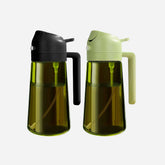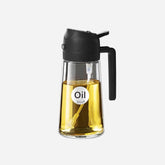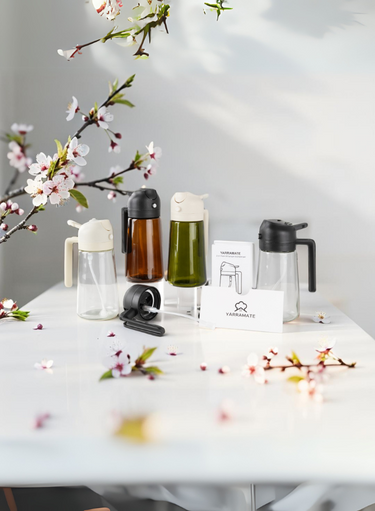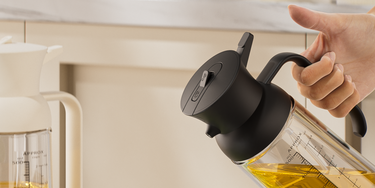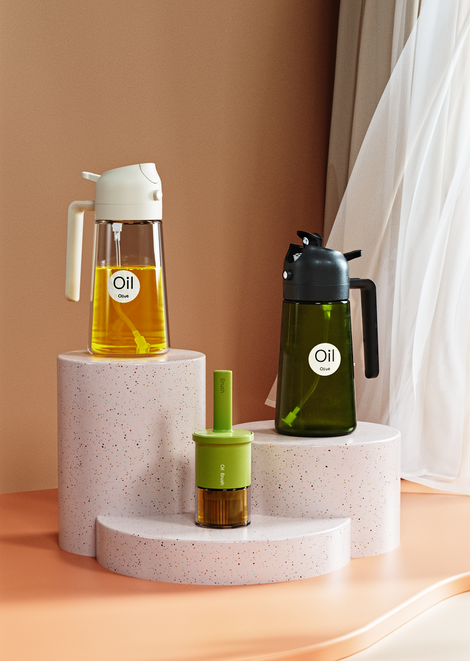Things You Need to Know About Oil Sprayers
Ever pulled out a heavy olive oil bottle while prepping dinner, only to realize you poured way too much into the pan? Or maybe you’ve struggled to evenly coat vegetables before roasting. That’s where the oil sprayer steps in. It’s a small tool that makes a big difference—controlling portions, reducing waste, and giving your dishes that light, even coverage chefs swear by.
Whether you’re cooking with an air fryer, grilling outdoors, or just dressing a simple salad, an oil sprayer makes cooking lighter, healthier, and more efficient.
What We’ll Cover
In this guide, we’ll break down the most common oil sprayer types, share hands-on tips to make your sprayer last longer, warn you about common DIY hacks that could ruin your cooking tools, and finally, highlight a brand that puts both design and durability first.
Types of Oil Sprayers You’ll Come Across
Pump-Action Oil Sprayers
These are the most popular for home cooks. You pump the top to build pressure, then press to release a fine mist. The best part? They don’t rely on chemical propellants. They’re reusable, eco-friendly, and often dishwasher-safe.
Aerosol Sprayers
Think of the canned versions you find in supermarkets. They’re convenient but come with propellants and can’t be refilled. While handy for quick cooking, they aren’t the most sustainable option—and long-term costs add up.
Glass Olive Oil Bottles with Spray Tops
These combine style and functionality. A glass olive oil bottle fitted with a sprayer top looks elegant on your countertop while letting you keep an eye on how much oil is left. Bonus: glass doesn’t absorb odors or degrade over time like some plastics can.
Practical Tips to Get the Best Out of Your Oil Sprayer
- Use the right oil: Extra virgin olive oil is thicker than canola or sunflower oil, so clean more often if that’s your go-to.
- Clean regularly: Every 2–3 weeks, rinse your sprayer with warm water and mild soap.
- Mind the angle: Keep your sprayer upright for the best mist.
- Store smart: Avoid leaving your sprayer in direct sunlight—it can affect oil quality.
According to the Harvard T.H. Chan School of Public Health, using less oil while maintaining flavor can significantly reduce daily calorie intake. That’s exactly what oil sprayers help you achieve.
DIY Warnings: What You Should Avoid
The internet is full of “life hacks,” but some aren’t worth the risk. A common one is trying to poke holes in the cap of a standard plastic bottle to create a makeshift sprayer. Not only does this lead to uneven sprays, but bacteria can build up inside, making it unsafe for food use.
Another mistake? Using vinegar in sprayers not designed for acidic liquids—it can corrode certain metals and damage seals.
A Brand That Gets It Right
A well-made sprayer is more than just a gadget—it’s a kitchen essential. That’s why we designed ours with durability and ease of use in mind. With a sturdy glass olive oil bottle and a clog-resistant spray mechanism, it’s built to look good on your table and perform daily in your kitchen.
Its wide-mouth design makes refilling a breeze, and the precise spray helps you cut back on unnecessary oil without sacrificing taste. Whether you’re roasting veggies or finishing a pizza, this sprayer is made to deliver consistency.
Bringing It All Together
Cooking is about balance: flavor, health, and convenience. A quality oil sprayer helps you nail all three. From understanding the types available to following simple care tips, the right choice will make your meals lighter, your kitchen neater, and your cooking experience more enjoyable.
Next time you reach for that heavy olive oil bottle, remember—a smart sprayer can save you time, money, and calories, all while making your dishes taste better.




